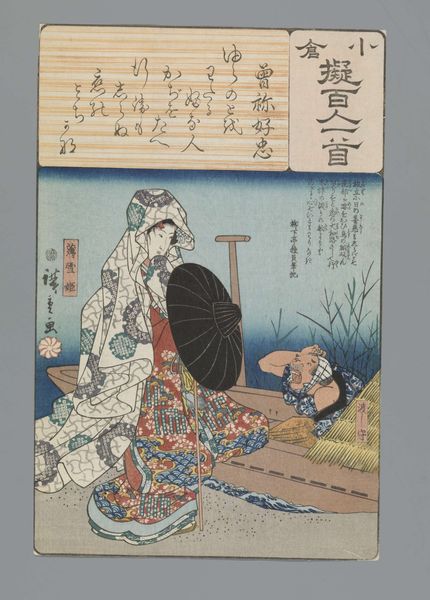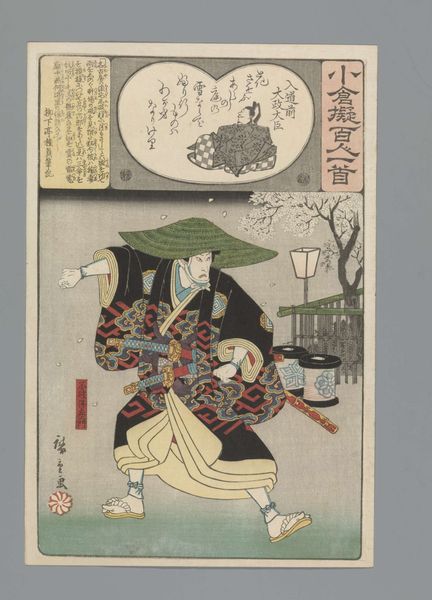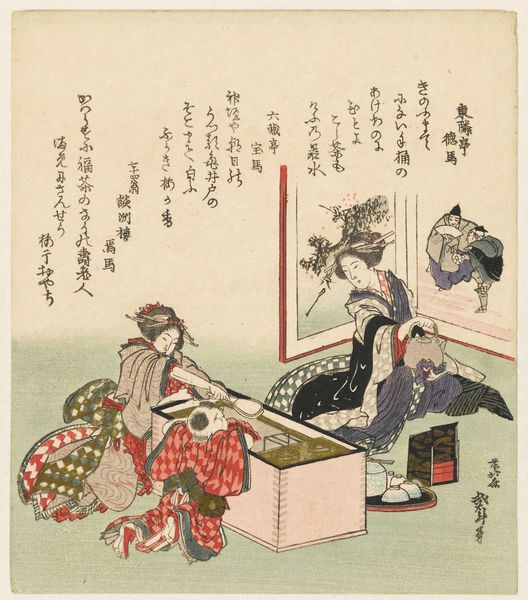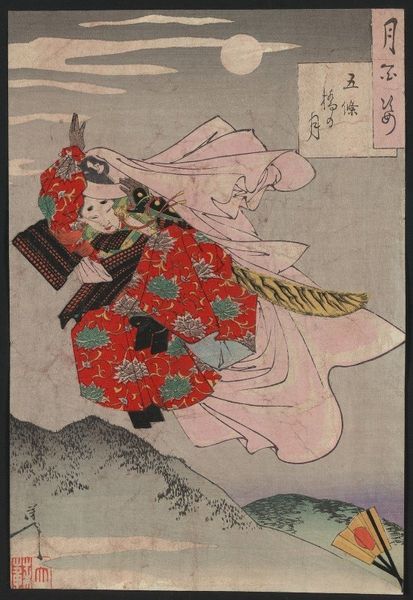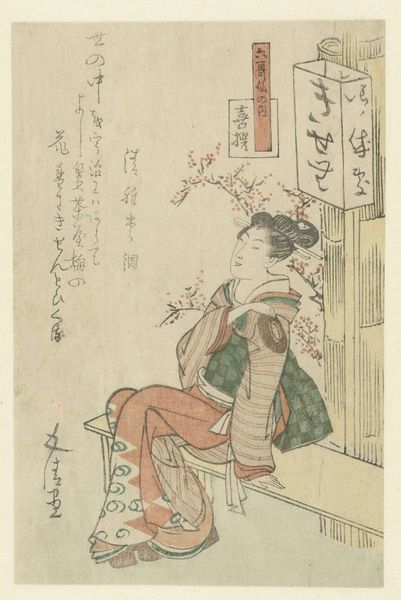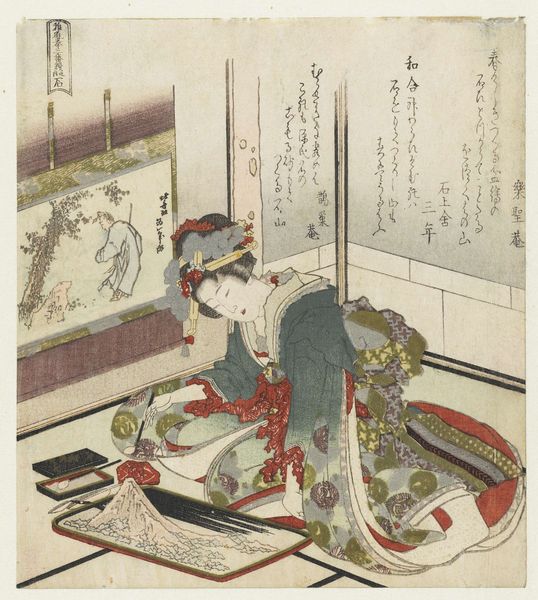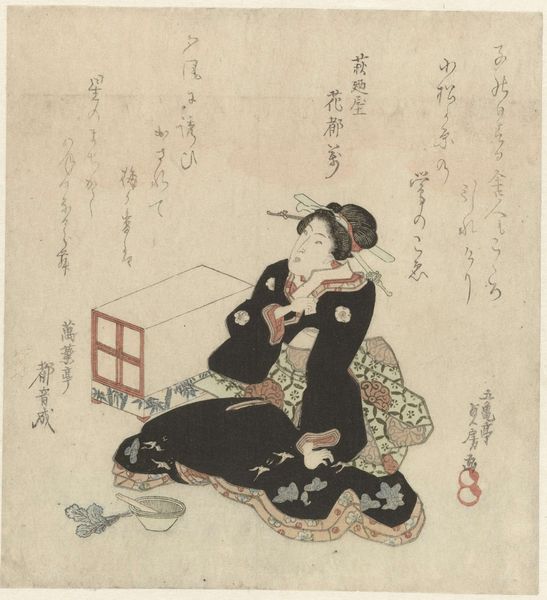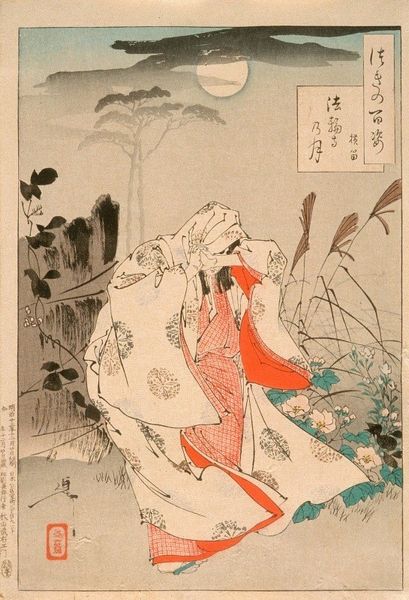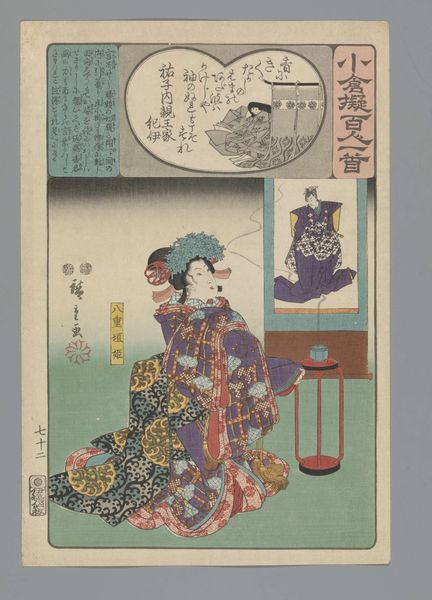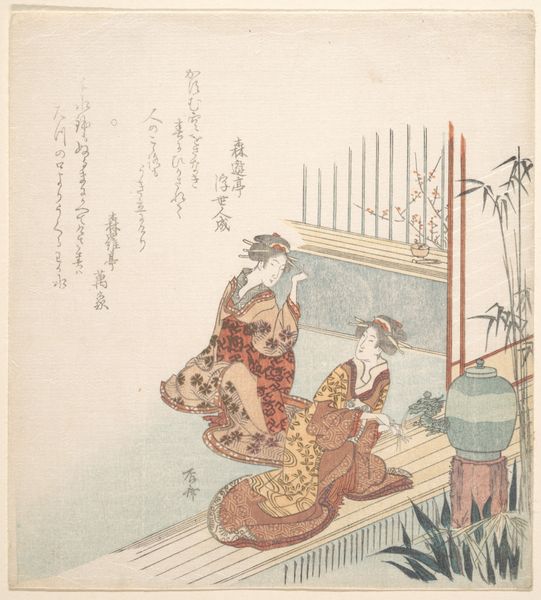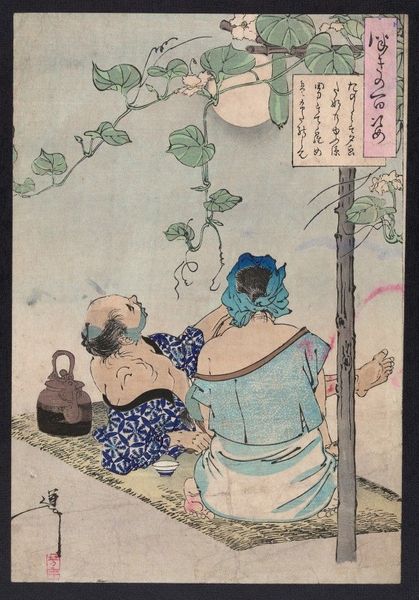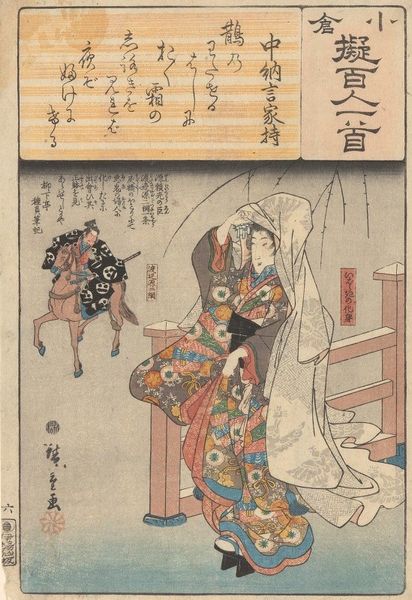
print, woodblock-print
# print
#
asian-art
#
landscape
#
ukiyo-e
#
woodblock-print
#
genre-painting
Dimensions: height 360 mm, width 249 mm
Copyright: Rijks Museum: Open Domain
Curator: Look at this delicate dance of line and color, it is "Usuyukihime bij een veerboot," which translates to "Usuyukihime on a Ferry," a woodblock print by Utagawa Hiroshige, crafted around 1846. I'm struck immediately by its quiet narrative. Editor: There's such a beautiful, melancholic air about it, isn't there? The soft blues of the water against the figure adorned in those elaborate floral and geometric patterns... and what’s happening here? It's quite curious! Curator: Indeed. We have the refined figure of Usuyukihime, presumably a woman of high social standing, sheltering under a large black umbrella on what appears to be a simple ferry, right next to the ferryman who is asleep! A wonderful contrast in statuses and a touch of humor there, don’t you think? Editor: The composition really emphasizes that divide, placing them almost in separate worlds within the same space. We see this class distinction also played out in the clothing—her garments, these rich tapestries almost, beside the rough fabric of the boatman. Is this commentary on social stratification in 19th century Japan? Curator: It certainly points to that, doesn't it? And also consider the ukiyo-e tradition this piece falls into; a focus on daily life. There’s a vulnerability in showing her traveling like this, exposed to the elements and circumstance. Almost a moment of humanizing someone elevated from poverty. Editor: Absolutely. And perhaps it touches on the complexities of visibility and power. She's present, but somewhat shrouded, and the poem inscribed above suggests there's more than just an immediate visual encounter. What exactly is that relationship between the ferryman sleeping and this figure of elegance on a ferry? Curator: It seems like it asks questions, rather than offer easy answers. Much like life. Even the materials -- woodblock and ink -- embody a blending of artistry and accessibility in this form. What would she tell us if the time gap disappeared? Editor: An act of historical empathy… to think about. It truly reminds me to question narratives, power structures, and what lies beneath surfaces! I’ll never look at a woodblock the same again.
Comments
No comments
Be the first to comment and join the conversation on the ultimate creative platform.
